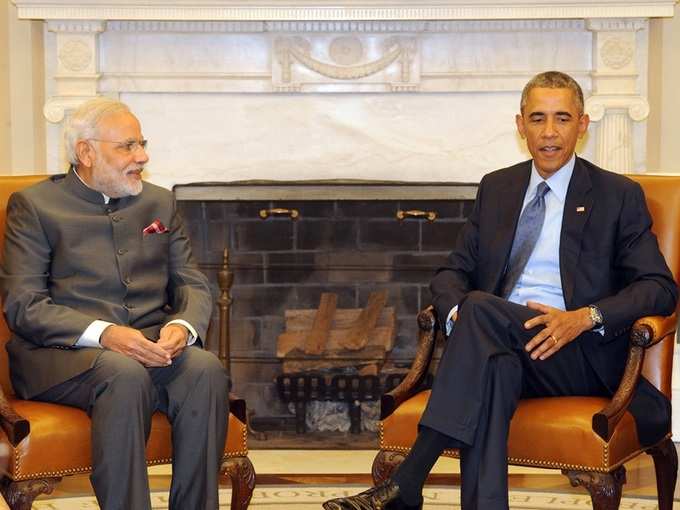 India’s Prime Minister
India’s Prime Minister Why should the US invest in India and rev up its economy? Simple logic. India will grow into the third-largest economy by 2030 and will be “the market” for the US. It will be the same year when India’s middle class is expected to have a purchasing power of almost US$13 trillion annually, 23% of global spending.
Of course, over the last ten years and more, ties between the US and India have not been very cordial politically. India had been relegated to the background in terms of investment and economic development. Today, trade between the US and India stands at US$97 billion as compared to US$19 billion in 2000.
This growth is very minimal when compared to the trade between the US and China, which stands at US$600 billion.
Ironically, the world oldest democracy’s biggest trading partner is the world’s most authoritarian regime.
Despite the entire high-brow trumpeting of values, the bottom line is profitability and Americans are notoriously pragmatic when it comes to profit.
Surprisingly, (despite the large successful Indian Diaspora in the US) the US has always been lukewarm to India. The US has pursued a biased policy inimical to India in its relationships and trade ties with China and Pakistan, both hostile to their neighbour, India.
India is offering all the advantages China has of low-cost of production, skilled workforce and so on.
However, the stumbling block as seen from the American viewpoint is the notorious Indian bureaucracy that makes investment a long drawn out and complicated procedure. American investors will also require attractive tax laws and the assurance that there will be no retrospective levies before they commit to investments in India. The sub-continent also needs to improve its infrastructure to fuel economic growth and development and according to Prime Minister Narendra Modi, this will be remedied.
Of course “Make in India” seems contrary to the American intention of bringing production back home to tackle unemployment, but the high production costs there will not make it easy.
By investing in the “Make in India’’ the US will be creating more business opportunities and more high-end jobs in America and the profits will, of course, boost its economy.
America should also not overlook India’s growing clout. Contrary to earlier governments,
.Modi has proved that the US, despite its strengths in innovation and technology, is not the only solution to India’s requirements. His strong position at BRICS, which is all set to set up a counter to the World Bank and his bilateral relations during his recent visit to Japan and the visit by Chinese President Xi Jinping to India, has
Japan will be offering, over a period of five years,
As the US Government has little say in how private American businesses deal,
Of course the US will try its best to wring concessions from India in the form of defense contracts and that it toes the US line in the WTO and supports it on ISIS. However, it is doubtful that
On the political front, India too expects the US to relook its relationship with Pakistan, Afghanistan and China. On the economic front, the vexed visa issue will also have to be sorted out. India resents the new visa rules that make it difficult for Indian professionals to work in the US and will ask for concessions and revisions. The US will have to change its perceptions and misconceptions about India.
Investing in ‘`Make in India’’ will have symbiotic benefits for the US and India both economically and politically.